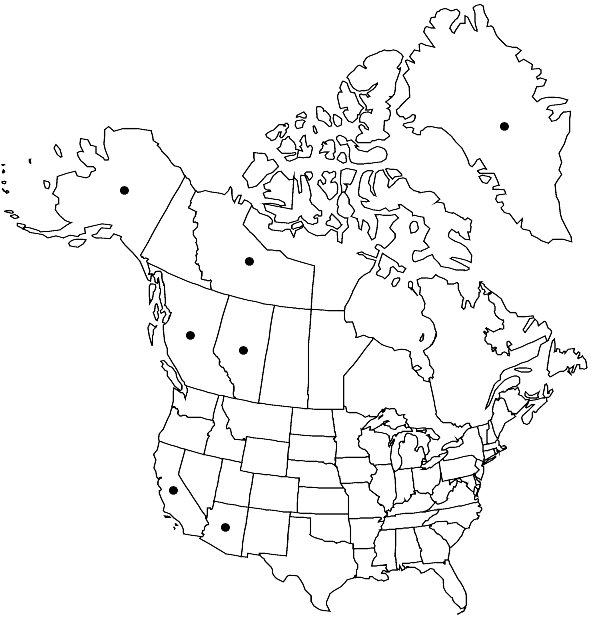Barbula amplexifolia
Ber. Thätigk. St. Gallischen Naturwiss. Ges. 1871–1872: 424. 1873,.
Stems to 1 cm. Leaves firm when wet, short-lanceolate to lanceolate, 1.1–1.5 mm, base long-oblong to elliptic and sheathing, margins plane or rarely recurved at mid leaf, apex acute, strongly mucronate; costa short-excurrent, abaxial costal surface smooth or occasionally doubly prorate, rarely simply papillose near apex, hydroids absent; distal laminal cells firm-walled, quadrate, 7–10 µm wide, 1: 1, papillose. Specialized asexual reproduction by clusters of redbrown ovoid gemmae borne on stalks in leaf-axils, 40–100 (–150) µm long. Sporophytes absent in range of the flora.
Habitat: Rock, often limestone, occasionally sandstone, usually in moist areas, mountain slopes, cliffs, tundra, mist zone of waterfalls
Elevation: moderate to high elevations (700-1800 m)
Distribution

Greenland, Alta., B.C., N.W.T., Alaska, Ariz., Calif., Asia (India), Asia (Japan), Asia (Korea)
Discussion
Barbula amplexifolia belongs in sect. Convolutae by the convolute-sheathing perichaetial leaves, lack of hydroid cells in costa, and occasional prorulae on abaxial surface of costa. It is distinguished from B. convoluta most immediately by the stiff and sharply pointed leaves with a smooth, short mucro. On further study, the distinctions between B. coreensis (Cardot) K. Saito and this species made by M. S. Ignatov and R. H. Zander (1993) do not hold; e.g., the type of B. haringae has short, 65–75 µm, propagula and rough costal abaxial surface; a specimen from the Northwest Territories (Steere 76-605, NY) has rough costae and propagula variably 90–150 µm; the type of B. amplexifolia has a smooth costa and intermediate-sized propagula, ca. 90 µm. Barbula convoluta var. eustegia (as in the type of B. whitehouseae) may have a similarly stout costa, but the percurrent costa is apiculate only by a single, usually papillose cell and has narrower, nonsheathing leaves.
Selected References
None.